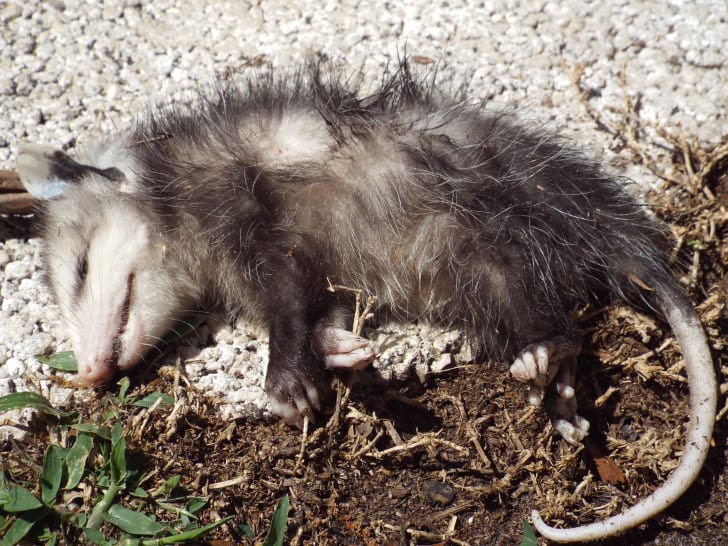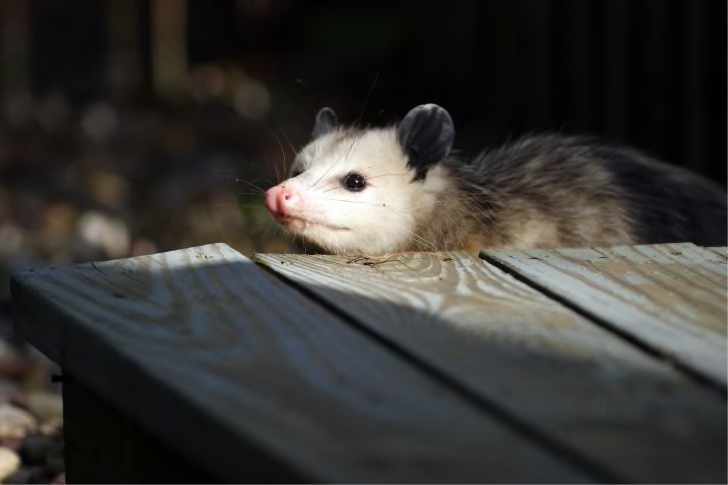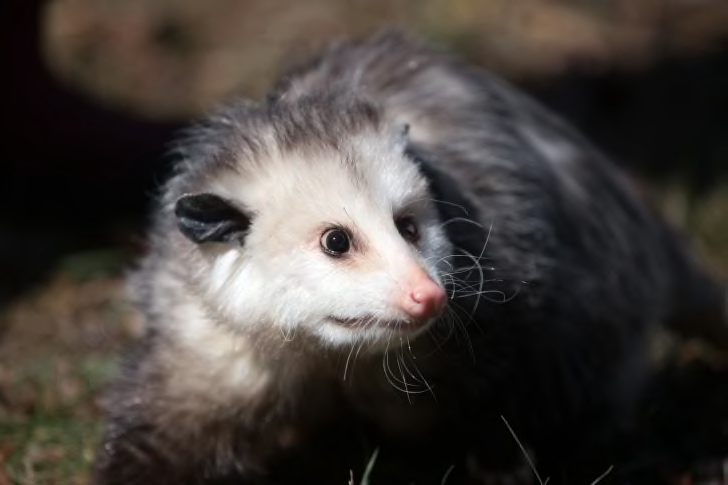
I’ve had a marsupial problem of late.
Technically, I guess it’s Esme with the problem. Lately, she’s been bringing baby possums into the house. She’s like a possum hoarder.
Perhaps it’s that the babies look like her fur toys. Maybe it’s her maternal instinct. Whatever the reason, she’s been taking to bringing them into my living room and just leaving the curled rat lookalikes in my living room, curled, apparently dead but not really. So far, she’s ferried three indoors.
Initially, I was horrified by what I thought was a rodent problem. The last thing I need is a rat cousin dropping by with its diseases and inquisitiveness and appetite.
But then I began doing a little research, and now I just feel sorry for the little guys, which are most likely young ones who lost their grip on mom. I learned they’re not rodent at all, but pouch-equipped animals much like the kangaroo and koala bear.
What’s more, I learned that ‘playing possum’ is a misnomer. Turns out possums aren’t faking being unconscious; they really slip into mini-comas when they’re stressed or startled. They get what genteel Southern belles used to call ‘the vapors;’ they literally faint, sometimes for hours. And sure enough, after carrying the babies outside with a garden shovel and watching them through my patio door, I’d see them gently rouse from their comas and sluggishly walk into the darkness.
Now I can’t help but like the little guys. I mean, what a short stick they seemingly drew in the Darwin lottery. If your irresistible inclination is to faint when you’re approached by a predator, you’d think you wouldn’t be long for existence. But my assumptions were way off. In that spirit, this week’s Factslaps concern my new favorite marsupial:
- AN OFFENSIVE ODOR SELLS THE POSSUM’S PERFORMANCE.
When they fall into a coma, a possum lays unconscious with its mouth open, teeth bared and tongue out. But a picture of a possum fainted doesn’t really do it justice. To get the full experience, you need to be standing over to it to smell the putrid odor it emits when pretending to be a corpse. The smelly substance it secretes from its anus is just one more reason for foxes and bobcats to look for their dinner elsewhere.
- THEY SLOW THE SPREAD OF LYME DISEASE.
Even if possums aren’t the cutest creatures in the forest, they should be a welcome addition to your backyard. Unlike other mammals that carry ticks, and therefore spread Lyme Disease, possums gobble up 90 percent of the ticks that attach to them. According to the National Wildlife Federation, a single possum consumes 5,000 of the parasites per tick season. That means the more possums that are in your area, the fewer ticks you’ll encounter.
- THEIR MEMORIES ARE SURPRISINGLY SHARP.

- THEY’RE IMMUNE TO MOST SNAKE VENOM.
While most animals look at a snake and see danger, a possum sees its next meal. The animals are immune to the venom of nearly every type of snake found in their native range, the one exception being the coral snake. Possums take advantage of this adaptation by chowing down on snakes on a regular basis. Researchers have been trying to harvest possums’ antivenom powers for decades. A few years ago, a team of scientists made progress on this front when they recreated a peptide found in possums and and found that mice given the peptide and rattlesnake venom were successfully protected from the venom’s harmful effects.
- THEY ALMOST NEVER GET RABIES.
While possums aren’t totally immune to rabies (a few cases have been documented), finding a specimen with the disease is extremely unlikely. Marsupials like possums have a lower body temperature than the placental mammals that dominate North America—in other words, their bodies don’t provide a suitable environment for the virus.
- THEIR TAIL ACTS AS A FIFTH APPENDAGE.

- THEY’RE CONSTANTLY SELF-GROOMING.
Thanks to their whole acting-and-smelling-like-a-corpse routine, opossums aren’t known as the most sanitary animals in nature. But they take cleanliness seriously: The Washington Department of Fish and Wildlife writes that possums, like house cats, use their tongue and paws to groom themselves frequently and thoroughly. Possums largely lack sweat glands, and this behavior is believed to help them cool down. It also has the added effect of rendering them odorless (when they’re not secreting stinky predator-repellent, that is).
- THEIR EYES AREN’T TOTALLY BLACK.

One of the opossum’s most recognizable features is its pair of opaque eyes. Opossum eyes do have whites and irises, but because their pupils are so large, their eyes appear completely black from a distance. The exaggerated pupil dilation is thought to help the nocturnal animals see after the sun goes down.
- THEY’RE SOCIAL CREATURES.
It was long assumed that possums like to keep to themselves, but a study published in the journal Biology Letters suggests they have a social side. Researchers at the Federal University of Pernambuco in Recife, Brazil observed some possums in captivity sharing dens even if they weren’t mates. In one case, 13 white-eared opossums of various age groups were cohabiting the same space. The scientists suspect that male and female possums living in the wild may even build nests together as a way to trigger the female’s reproductive hormones.
